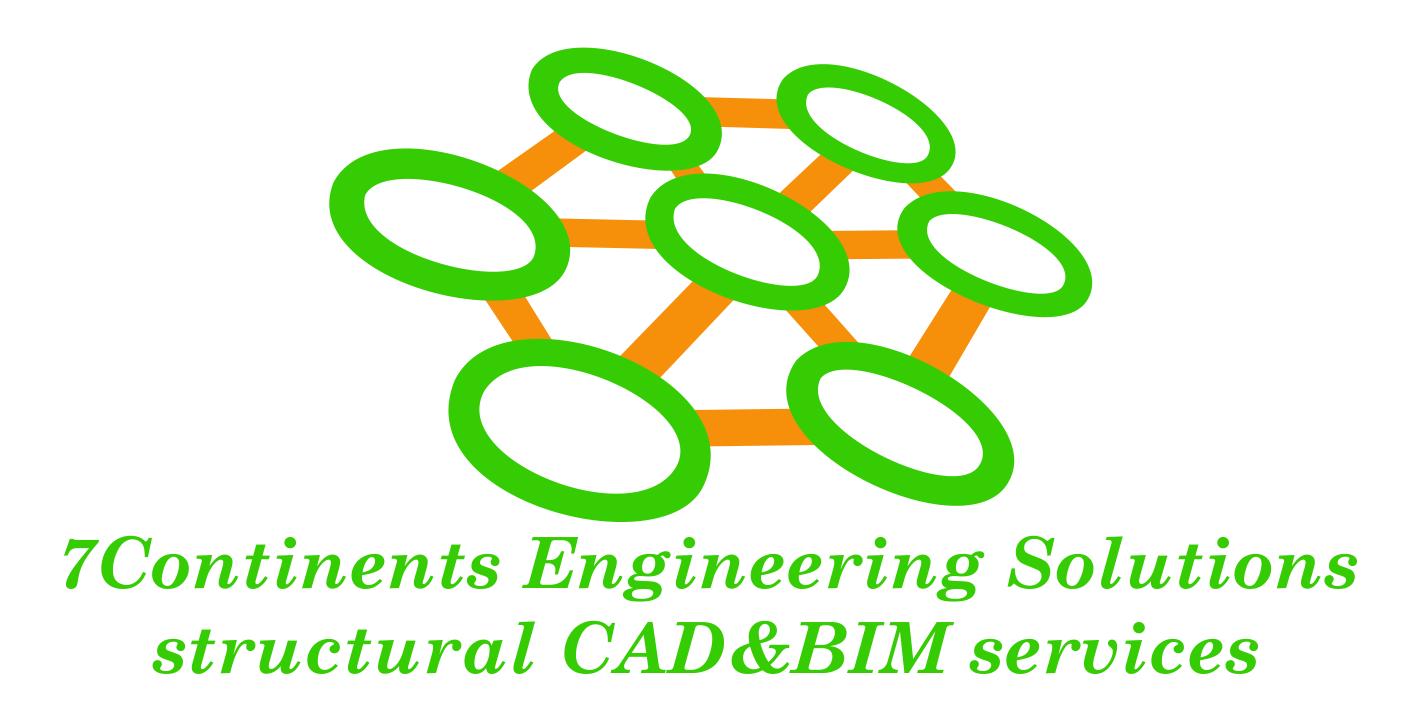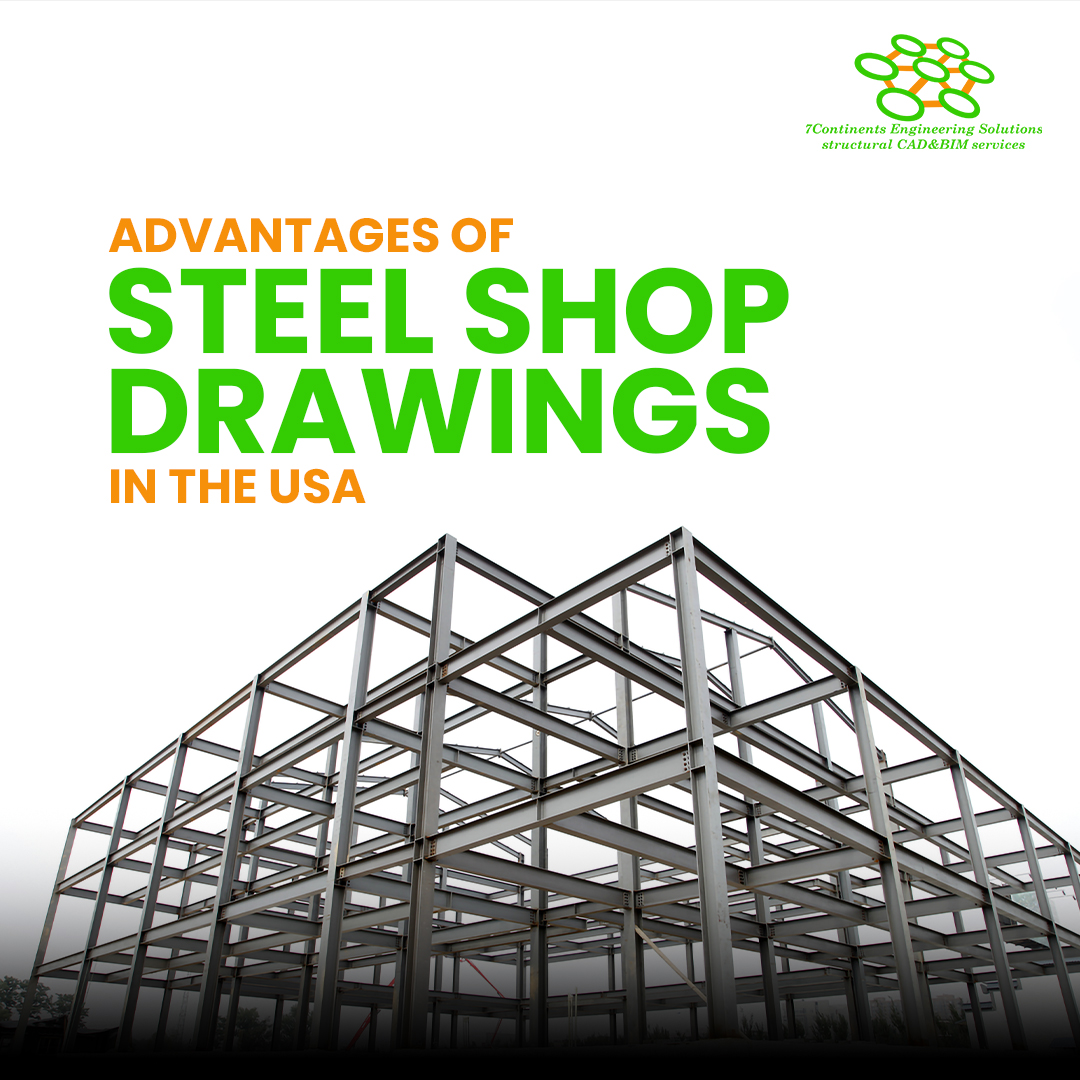In the ever-changing industry of construction, for the execution of a project successfully – precision, efficiency, and accuracy are essential. The usage of steel as a material has become very common in the United States of America, and this has led to the need and requirement for comprehensive and detailed documentation. Steel detailing shop drawings, also known as steel shop drawings or shop drawings for steel fabrication, are a crucial part of construction industry project processes, ensuring seamless communication among all stakeholders. Further in the article, we’ll discuss the numerous other advantages of steel detailing shop drawings in the United States of America and how they are contributing to more successful projects in construction.
Enhanced Communication and Collaboration:
Steel detailing shop drawings, or shop drawings for steel fabrication, have several benefits, one of which is their ability to foster good stakeholder engagement and communication. Architects, engineers, contractors, and fabricators can better evaluate the minute features found in the drawings. This ease of understanding minimizes miscommunication and ultimately builds up an atmosphere of working together where everybody knows what is to be expected. Consequently, such a facility improves better interrelations at the construction site.
Steel detailing shop drawings are important because they provide a link between the design stage and construction itself through accurate representation of designers’ intentions. They give fabricators as well as contractors the exact specifications, dimensions, and assembly directions required to bring out the intention of design in mind. By having these details correct during fabrication and installation phases there is minimal deviation from what is expected by an architect.
Streamlining the Fabrication Process:
Efficiency plays an integral part in construction projects and shop drawings for steel fabrication play a significant role in simplifying the process of fabrication. These drawings enable fabricators to create individual steel components with accuracy thereby making them fit easily into the entire building’s structure. By eliminating the requirement for continuous back-and-forth interaction between the design and fabrication teams, the efficiency of the fabrication process improves as well as the possibility of error is reduced.
The fabrication process is a time-consuming process and utilizing steel detailing shop drawings reduces costs and saves a great deal of time. Time is as important as money in the construction sector, and delays might cause project costs and schedules to spiral out of control in terms of cost. Because they minimize errors and rework, steel shop drawings speed up the construction process. Fabricators may move forward with confidence when they have thorough and precise documentation, which lowers the risk of expensive errors and guarantees that projects are finished on schedule and within budget.
Meeting Regulatory Requirements:
The construction sector in the US is subject to strict regulatory standards and codes of building. Shop drawings made for steel are very important in making sure that these regulations are met. Such drawings assist in ensuring that these components meet the requirements stipulated by local, as well as national governments about safety and structural integrity by providing an elaborate guide to their fabrication and installation. These ensure not only the safety of the eventual structure but also help avoid possible legal issues arising from non-adherence.
Additionally, the detailed nature of steel detailing shop drawings allows project parties to make comprehensive quality control tests hence ascertaining whether or not a completed construction meets minimum industry standards. Ultimately, the careful execution of details during manufacturing and placement culminates in a product that is not only compliant with regulation but also upholds good building practices.
Better Quality Control:
Quality control is crucial in construction, where steel shop drawings remain vital in keeping high levels. By specifying materials and dimensions specifically these fabrications provide sufficient information for fabricators or contractors so that they can maintain quality control over what they produce or set up concerning Steel materials. The final structure meets or surpasses industry quality standards because of the painstaking attention to detail that is applied throughout the fabrication and installation stages.
Additionally, using steel shop drawings helps to lower the number of construction disagreements. In construction projects, miscommunication and misconceptions can give rise to disputes that frequently result in expensive delays and court fights. A comprehensive documentation of the agreed-upon requirements and design purpose is provided by steel shop drawings. These drawings can be used to explain desired details in the event of differences or disputes, facilitating amicable resolution and preventing drawn-out conflicts.
Adaptability to Complex Designs:
Often in contemporary architecture, new buildings have intricate and new styles that defy normal construction methods. Steel shop drawings are used to provide detailed instructions for the correct execution of such complex designs. The elaborate information on shop drawings ranging from curved steel members to complicated connections and irregular shapes enables fabricators to deal with problems related to intricate designs resulting in the desired structure that reflects the architect’s vision.
Steel shop drawings help minimize waste and optimize material usage at a time when sustainability is a major concern in building practices. With exact specifications, fabricators can reduce the amount of scrap produced during production processes. This not only fits in with sustainable construction practices but also reduces excessive raw material requirements leading to cost savings.
Facilitating Effective Project Management:
Clear communication, efficient resource allocation, and compliance with deadlines are critical for successful project management. These aspects form one of the major contributions of steel shop drawings towards these aspects since they act as a guide through each step of the construction process. For instance, project managers can use these drawings for better tracking progress, resource allocation, or coordination of tasks within their projects.
Additionally, the adaptability of steel shop drawings to complex designs supports effective project management. Project managers can use these detailed drawings to anticipate and address potential challenges associated with intricate architectural designs. This proactive approach helps in avoiding delays and ensuring that the project stays on schedule.
Cost Savings and Time Efficiency in Steel Shop Drawings:
Under the theme of cost savings and time efficiency, the use of steel shop drawings presents numerous benefits. In addition to reducing errors and rework, these drawings help in material estimation. The amount of steel required can be calculated accurately by fabricators thus reducing wastage while optimizing resource utilization. This is consistent with green building practices as well as huge savings on extra material costs. In terms of time, the efficiency achieved through the use of shop drawings for steel fabrication extends to project timelines and scheduling. Construction projects are less likely to suffer from unforeseen delays when they have a well-documented and detailed plan in place. With drawings that are accurate enough for them to create realistic schedules, project managers can better coordinate various teams involved in construction.
Enhancing Education and Skill Development:
The creation and interpretation of steel shop drawing require a high level of technical expertise and knowledge. The continuous learning process for professionals in the construction industry also involves using steel as a shop this aspect too often becomes a quick guide. Architects, engineers, as well as fabricators always have to update themselves on recent developments plus regulations about steel-related aspects. This ongoing learning process enhances the overall skill set of industry professionals, ensuring that they can effectively leverage the benefits of steel shop drawings in their respective roles.
Conclusion:
To sum up, steel shop drawings have many benefits and are crucial for building projects to be completed successfully in the United States. Steel detailing shop drawings are essential at every level of the building process, from improving coordination and communication

